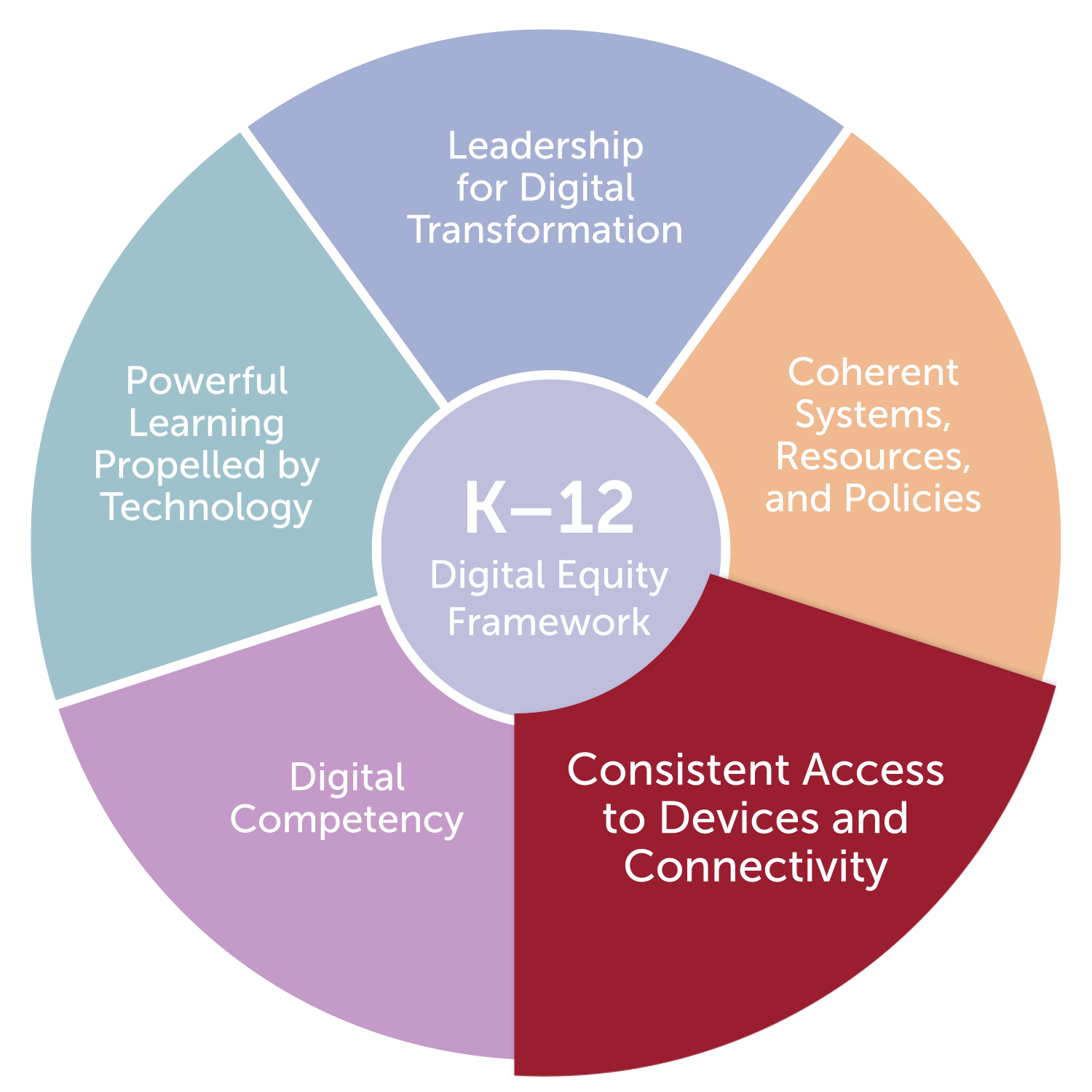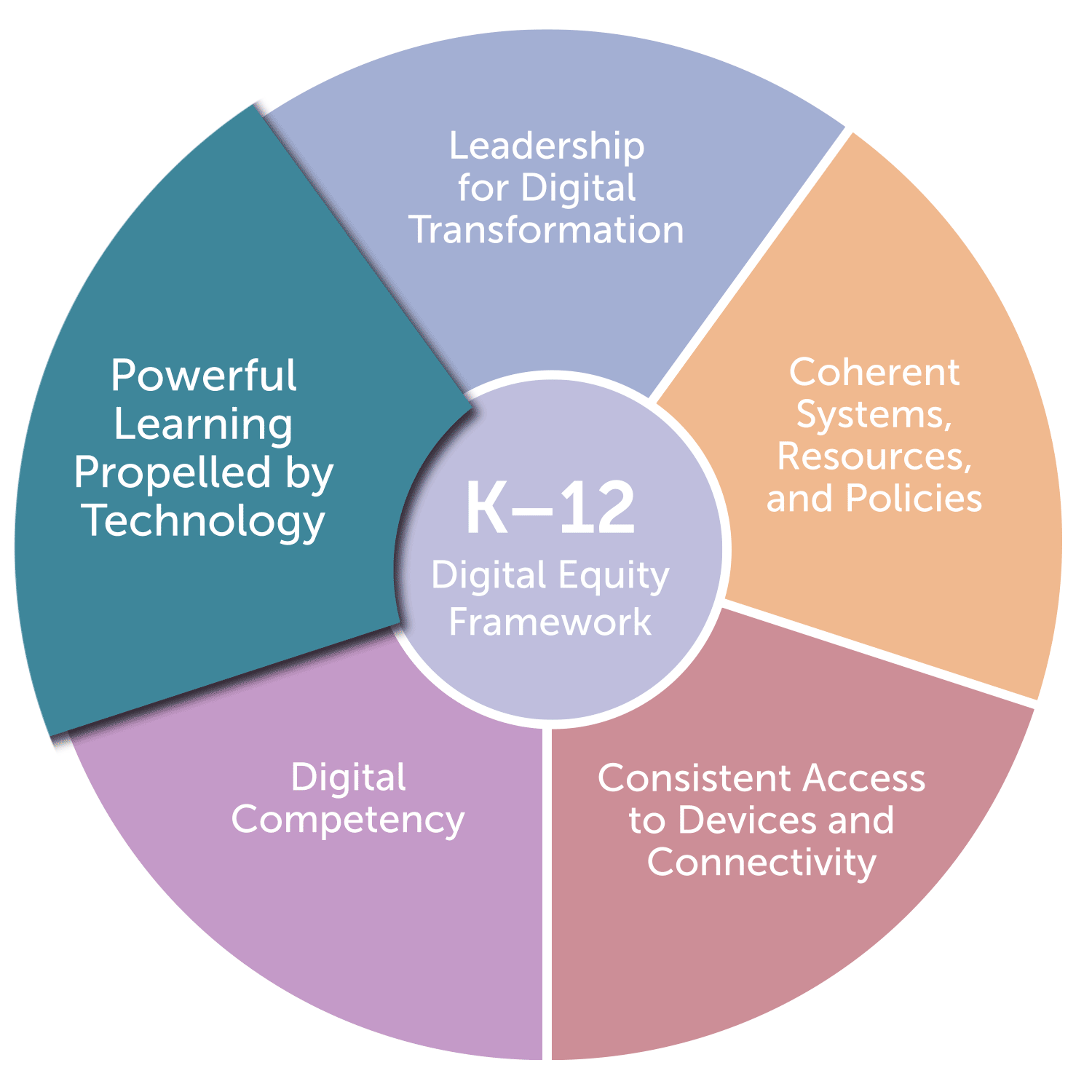The K-12 Digital Equity Framework is a systematic way for leaders, teachers, and coaches to advance digital equity by closing the digital teaching and learning gap in schools. It is comprised of five interdependent components, or domains.
 Leadership for Digital Transformation
Leadership for Digital TransformationStrong leaders develop, communicate, and enact a clear vision for deep technology integration, leading to direction and support for digital transformation initiatives.
By setting the conditions for learner-centered education, leaders effectively address the need for equitable academic, social, and economic outcomes for all students.

Coherence across organizational functions, systems, resources, and policies allows school leaders and teachers to effectively leverage technology for student learning.
By integrating technology into core systems such as professional learning communities, coaching models, and assessment mechanisms, leaders and coaches create a sustainable and impactful digital transformation that supports teaching and learning.

When leaders ensure adequate and consistent access to high-speed internet, devices, and emerging technologies, teachers can provide equitable learning opportunities for all students, closing the digital access divide.
By prioritizing physical infrastructure, procurement, device distribution and maintenance, and sustainability plans, leaders may prevent interrupted access to powerful learning experiences and support teachers’ ability to effectively integrate technology into their instruction.
 Digital Competency
Digital CompetencyDeveloping the digital skills, mindsets, dispositions, and behaviors essential for learners, educators, and all people to effectively use technology prepares teachers and coaches to adequately support student success in a digitally driven society.
When digital competencies are prioritized, teachers, coaches, and leaders are better able to lead, educate, learn, navigate, communicate, and utilize current and emerging technologies in their personal, academic, and professional lives, increasing their effectiveness in supporting student learning.
 Powerful Learning Propelled by Technology
Powerful Learning Propelled by TechnologyEmphasizing the creation of engaging and relevant learning experiences that lead to deep understanding through the integration of emerging technologies, digital resources, and tools helps teachers effectively transform their teaching practices and support powerful student learning.
Teachers and coaches can promote equitable outcomes and long-term success for all students by prioritizing the development of vital competencies needed for all learners to earn credentials and achieve economic security, agency, and well-being.
Domains
Domains represent a distinct facet of the larger education system needed to advance digital equity. Each domain reflects the collective application of specific competencies across multiple roles
Domain Indicators
The domain indicators provide guidance on what school and district stakeholders need to accomplish to activate the domains. Hitting these “markers” signal that schools and districts are making progress toward achieving each domain in full.
Digital Equity Competencies for K-12 School Systems
The Digital Equity Competencies define what teachers, instructional technology coaches, and administrators (inclusive of district, school, and IT leaders) need to know and be able to do—and the mindsets they need to have—to activate each of the five domains collectively.
Interdependencies Across Domains
Digital equity can be realized when all of the framework’s five domains are present. The framework is incomplete if any of the domains are lacking.